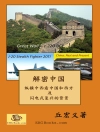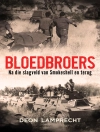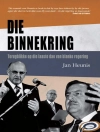This book explores changes in emotional cultures of the early modern battlefield. Military action involves extraordinary modes of emotional experience and affective control of the soldier, and it evokes strong emotional reactions in society at large. While emotional experiences of actors and observers may differ radically, they can also be tightly connected through social interaction, cultural representations and mediatisation. The book integrates psychological, social and cultural perspectives on the battlefield, looking at emotional behaviour, expression and representation in a great variety of primary source material. In three steps it discusses the emotional practices in the army, the emotional experiences of the individual combatant and the emotions of the mediated battlefield in the visual arts.
Spis treści
Introduction.- Battlefield Emotions 1500-1800: Practices, experience, imagination by Erika Kuijpers and Cornelis van der Haven.- Part I: The Military: Emotional Practices and Community.- 1. Drill and Allocution as Emotional Practices in Seventeenth-Century Dutch Poetry, Plays and Military Treatises. Cornelis van der Haven.- 2. Magical Swords and Heavenly Weapons: Battlefield Fear(lessness) in the Seventeenth Century. Andreas Bähr.- 3. Emotions, Imagination and Surgery: Wounded Warriors in the Work of Ambroise Paré and Johan van Beverwijck. Bettina Noak.- 4. Fear, Honour and Emotional Control on the Eighteenth-Century Battlefield. Ilya Berkovich.- Reflections I. Early Modern Jokes on Fearing Soldiers. Johan Verberckmoes.- Part II: The Combatant: Emotional Experience and Writing.- 5. ‘His Courage Produced More Fear in His Enemies than Shame in His Soldiers’: Siege Combat and Emotional Display in the French Wars of Religion. Brian Sandberg.- 6. Emotions in the Making: The Transformation of Battlefield Experiences During the Seven Years’ War (1756-1763). Marian Füssel.- 7. Mediated Battlefields of the French Revolution and Emotives at Work. Ian Germani.- Reflections II. Whose Battlefield Emotion? Mary A. Favret.- Part III: The Public: Emotional Re-Creation.- 8. The Sidelong Glance: Tracing Battlefield Emotions in Dutch Art of the Golden Age. Lisa de Boer.- 9. Deflecting the Fire of Eighteenth-Century French Battle Painting. Valerie Mainz.- 10. Picturing Valenciennes: Philippe-Jacques de Loutherbourg and the Emotional Regulation of British Military Art in the 1790s. Philip Shaw.- Conclusions and perspectives.- Battlefield Emotions in Early Modern Europe: Trends, Key Issues and Blind Spots. Dorothee Sturkenboom.- List of Authors
O autorze
Erika Kuijpers teaches cultural history at VU University, the Netherlands. Her previous work concerned the social history of early modern migration and labour relations. From 2008-2013 she worked at Leiden University, the Netherlands, researching memories of the Dutch Revolt, as part of the VICI research project 'Tales of the Revolt: Memory, oblivion and identity in the Low Countries, 1566-1700′. She is co-editor of the volume Memory Before Modernity. Practices of Memory in Early Modern Europe (2013), and is working on a monograph about the way early modern witnesses and victims of war dealt with traumatic memories.
Cornelis van der Haven is a literary historian who has published on Dutch and German theatre and literature in the 17th and 18th centuries, with a strong focus on the role of literary texts in shaping cultural and social identities. He lectures at the Literary Department of Ghent University, Belgium.












